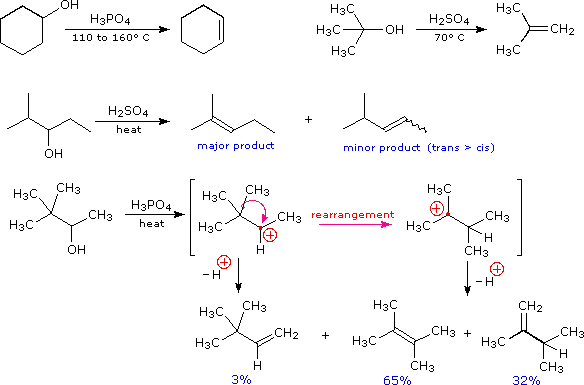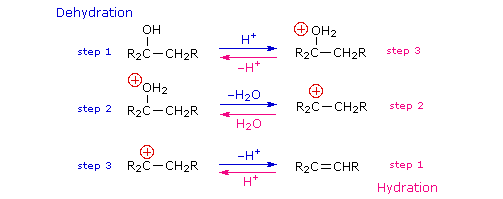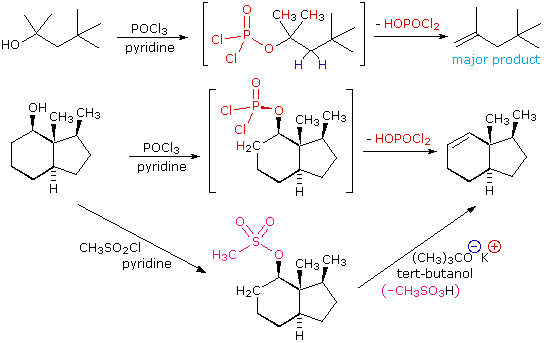

علم الكيمياء

تاريخ الكيمياء والعلماء المشاهير

التحاضير والتجارب الكيميائية

المخاطر والوقاية في الكيمياء

اخرى

مقالات متنوعة في علم الكيمياء

كيمياء عامة


الكيمياء التحليلية

مواضيع عامة في الكيمياء التحليلية

التحليل النوعي والكمي

التحليل الآلي (الطيفي)

طرق الفصل والتنقية


الكيمياء الحياتية

مواضيع عامة في الكيمياء الحياتية

الكاربوهيدرات

الاحماض الامينية والبروتينات

الانزيمات

الدهون

الاحماض النووية

الفيتامينات والمرافقات الانزيمية

الهرمونات


الكيمياء العضوية

مواضيع عامة في الكيمياء العضوية

الهايدروكاربونات

المركبات الوسطية وميكانيكيات التفاعلات العضوية

التشخيص العضوي

تجارب وتفاعلات في الكيمياء العضوية


الكيمياء الفيزيائية

مواضيع عامة في الكيمياء الفيزيائية

الكيمياء الحرارية

حركية التفاعلات الكيميائية

الكيمياء الكهربائية


الكيمياء اللاعضوية

مواضيع عامة في الكيمياء اللاعضوية

الجدول الدوري وخواص العناصر

نظريات التآصر الكيميائي

كيمياء العناصر الانتقالية ومركباتها المعقدة


مواضيع اخرى في الكيمياء

كيمياء النانو

الكيمياء السريرية

الكيمياء الطبية والدوائية

كيمياء الاغذية والنواتج الطبيعية

الكيمياء الجنائية


الكيمياء الصناعية

البترو كيمياويات

الكيمياء الخضراء

كيمياء البيئة

كيمياء البوليمرات

مواضيع عامة في الكيمياء الصناعية

الكيمياء الاشعاعية والنووية
Elimination Reactions of Alcohols
المؤلف:
William Reusch
المصدر:
Virtual Textbook of Organic Chemistry
الجزء والصفحة:
............
19-9-2018
1811
Elimination Reactions of Alcohols
In the discussion of alkyl halide reactions we noted that 2º and 3º-alkyl halides experienced rapid E2 elimination when treated with strong bases, such as hydroxide and alkoxides. Alcohols do not undergo such base-induced elimination reactions and are, in fact, often used as solvents for such reactions. This is yet another example of how leaving group stability often influences the rate of a reaction.
When an alcohol is treated with sodium hydroxide, the following acid-base equilibrium occurs. Most alcohols are slightly weaker acids than water so the left side is favored.
R–O–H + Na(+) OH(–)  R–O(–) Na(+) + H–OH
R–O(–) Na(+) + H–OH
The elimination of water from an alcohol is called dehydration. Recalling that water is a much better leaving group than hydroxide ion, it is sensible to use acid-catalysis rather than base-catalysis to achieve such reactions. Four examples of this useful technique are shown below. Note that hydrohalic acids (HX) are not normally used as catalysts because their conjugate bases are good nucleophiles and may give substitution products. The conjugate bases of sulfuric and phosphoric acids are not good nucleophiles and do not give substitution under the usual conditions of their use.

The first two examples (top row) are typical, and the more facile elimination of the 3º-alcohol suggests predominant E1 character for the reaction. This agrees with the tendency of branched 1º and 2º-alcohols to give rearrangement products, as shown in the last example. The last two reactions also demonstrate that the Zaitsev Rule applies to alcohol dehydrations as well as alkyl halide eliminations. Thus the more highly-substituted double bond isomer is favored among the products.
It should be noted that the acid-catalyzed dehydrations discussed here are the reverse of the acid-catalyzed hydration reactions of alkenes. Indeed, for reversible reactions such as this the laws of thermodynamics require that the mechanism in both directions proceed by the same reaction path. This is known as the principle of microscopic reversibility. To illustrate, the following diagram lists the three steps in each transformation. The dehydration reaction is shown by the blue arrows; the hydration reaction by magenta arrows. The intermediates in these reactions are common to both, and common transition states are involved. This can be seen clearly in the energy diagrams depicted by clicking the button beneath the equations.

Base induced E2 eliminations of alcohols may be achieved if their sulfonate ester derivatives are used. This has the advantage of avoiding strong acids, which may cause molecular rearrangement and / or double bond migration in some cases. Since 3º-sulfonate derivatives are sometimes unstable, this procedure is best used with 1º and 2º-mesylates or tosylates. Application of this reaction sequence is shown here for 2-butanol. The Zaitsev Rule favors formation of 2-butene (cis + trans) over 1-butene.
| CH3CH2CH(CH3)–OH | CH3SO2Cl |
CH3CH2CH(CH3)–OSO2CH3 | C2H5O(–)Na(+) |
CH3CH=CHCH3 + CH3CH2CH=CH2 + CH3SO2O(–) Na(+) + C2H5OH |
The E2 elimination of 3º-alcohols under relatively non-acidic conditions may be accomplished by treatment with phosphorous oxychloride (POCl3) in pyridine. This procedure is also effective with hindered 2º-alcohols, but for unhindered and 1º-alcohols an SN2 chloride ion substitution of the chlorophosphate intermediate competes with elimination. Some examples of these and related reactions are given in the following figure. The first equation shows the dehydration of a 3º-alcohol. The predominance of the non-Zaitsev product (less substituted double bond) is presumed due to steric hindrance of the methylene group hydrogens, which interferes with the approach of base at that site. The second example shows two elimination procedures applied to the same 2º-alcohol. The first uses the single step POCl3 method, which works well in this case because SN2 substitution is retarded by steric hindrance. The second method is another example in which an intermediate sulfonate ester confers halogen-like reactivity on an alcohol. In every case the anionic leaving group is the conjugate base of a strong acid.

 الاكثر قراءة في مواضيع عامة في الكيمياء العضوية
الاكثر قراءة في مواضيع عامة في الكيمياء العضوية
 اخر الاخبار
اخر الاخبار
اخبار العتبة العباسية المقدسة

الآخبار الصحية















 قسم الشؤون الفكرية يصدر كتاباً يوثق تاريخ السدانة في العتبة العباسية المقدسة
قسم الشؤون الفكرية يصدر كتاباً يوثق تاريخ السدانة في العتبة العباسية المقدسة "المهمة".. إصدار قصصي يوثّق القصص الفائزة في مسابقة فتوى الدفاع المقدسة للقصة القصيرة
"المهمة".. إصدار قصصي يوثّق القصص الفائزة في مسابقة فتوى الدفاع المقدسة للقصة القصيرة (نوافذ).. إصدار أدبي يوثق القصص الفائزة في مسابقة الإمام العسكري (عليه السلام)
(نوافذ).. إصدار أدبي يوثق القصص الفائزة في مسابقة الإمام العسكري (عليه السلام)


















